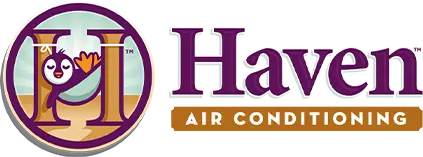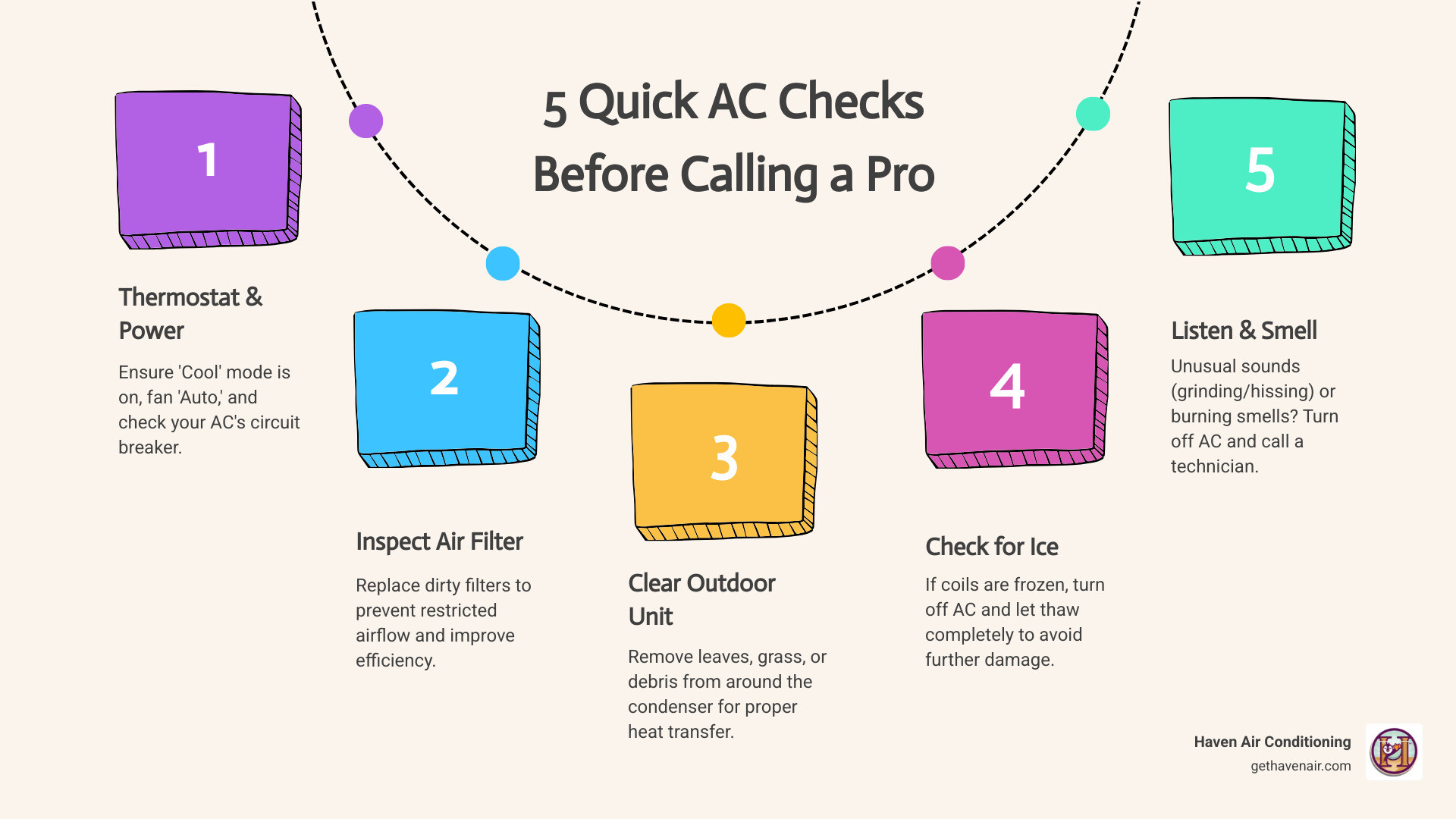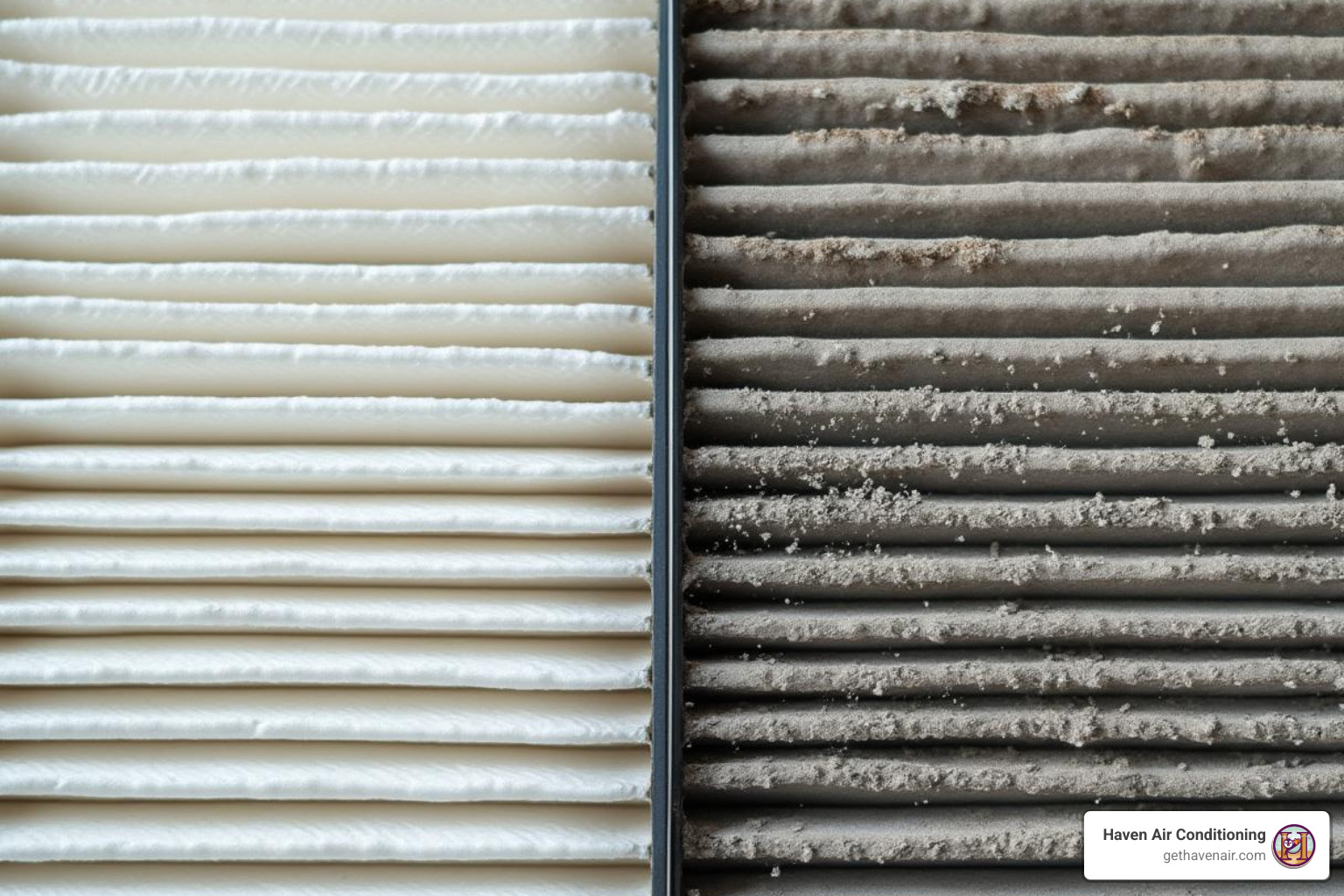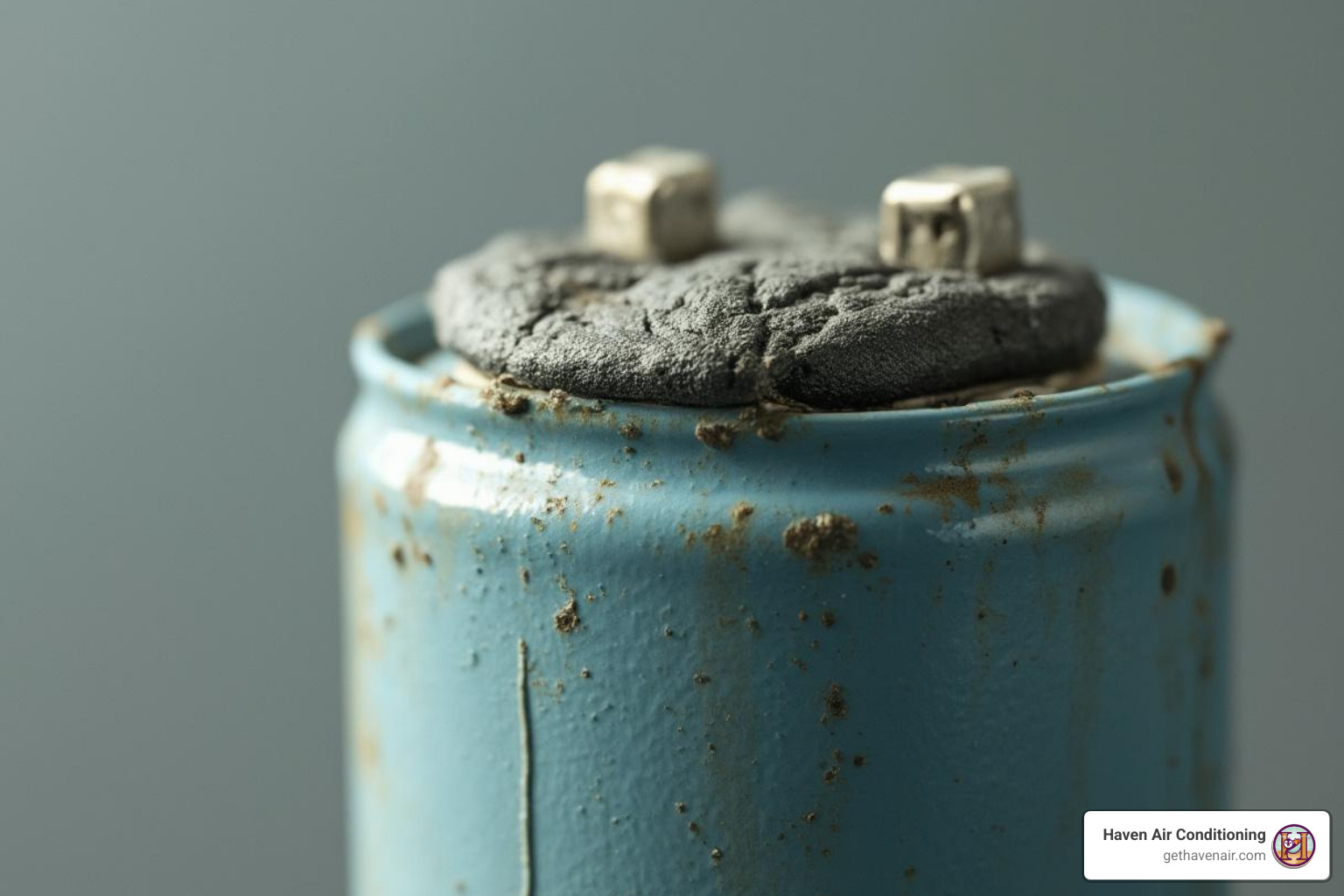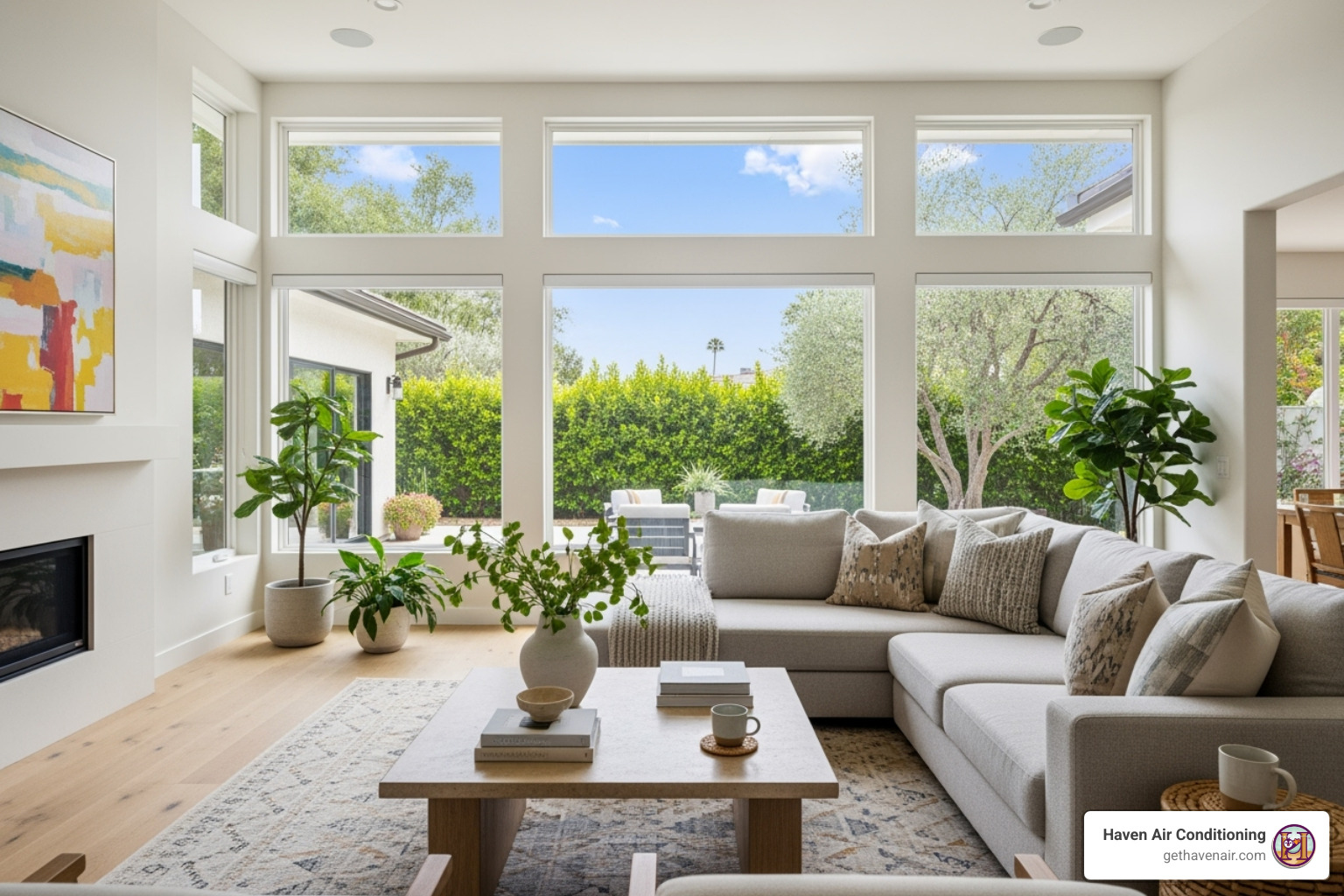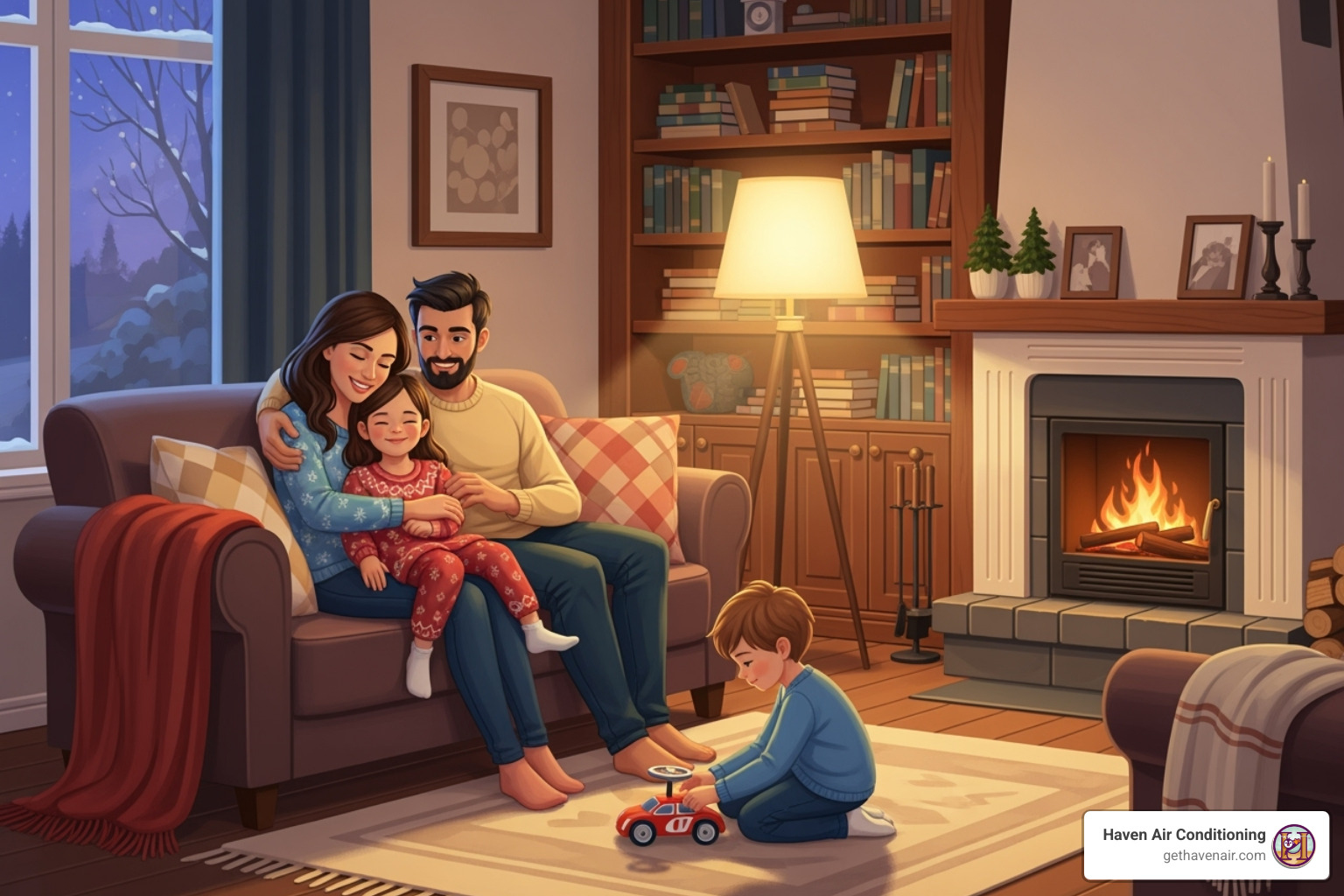Facing an AC Crisis in Extreme Heat?
In the sweltering Orange County heat, your home should be a cool refuge. But when you’re facing AC not cooling, extreme heat, HVAC inspection needs, it’s more than frustrating—it can be a serious health concern.
If your AC isn’t cooling, here are the immediate first steps to take:
- Check your thermostat settings. Make sure it’s set to “Cool” and the fan is on “Auto,” with the temperature lower than your current indoor temperature.
- Look at your circuit breaker. Find your home’s electrical panel and see if the breaker for your AC unit has tripped. If so, flip it off and then back on.
- Inspect your air filter. A clogged filter is a common culprit. If it’s dirty, change it right away.
- Clear the outdoor unit. Make sure no leaves, grass, or other debris are blocking the outdoor condenser unit. Give it at least two feet of clear space all around.
- Check for ice. If you see ice on the indoor or outdoor AC lines or coils, turn the unit off and let it thaw completely. Running it while frozen can cause more damage.
- Listen and smell. Unusual sounds (like grinding or hissing) or burning smells mean you should turn your AC off immediately and call a professional. These are signs of a serious problem.
In Orange County, a malfunctioning AC during intense summer heat is more than uncomfortable—it can pose real health risks, especially for children or the elderly.
This guide will help you understand common AC problems. You’ll learn simple fixes you can do yourself. You’ll also know when it’s time to call a professional for immediate help.
Why Your AC Struggles in Extreme Heat
When Orange County temperatures soar, air conditioning systems face their biggest challenge. Most home AC units are designed to cool your indoor space to about 20 degrees Fahrenheit below the outdoor temperature.
On a 100°F day, your system works hard just to reach 80°F. Trying to achieve 75°F pushes it beyond its design limits, increasing strain and energy costs.
How High Temperatures Overwork Your System
When temperatures hit the 95°F to 100°F range, your AC is forced into continuous operation for hours without a break.
The compressor, the heart of your AC, works much harder to pump refrigerant and push heat out. This intense effort leads to component overheating, reduced efficiency, and constant compressor strain, which can cause premature failure. This extreme wear and tear can shorten your system’s 10-15 year lifespan.
The Role of Humidity
Humidity also makes your AC work harder. Besides cooling air, your system removes moisture—a process called latent heat removal—which is essential for comfort.
Humid air forces your AC to pull double duty: cooling the air and wringing out moisture. This leads to longer run times and more wear. If your home feels sticky even at a cool temperature, your system is struggling with the moisture load. This is a sign an AC not cooling, extreme heat, HVAC inspection may be needed, as the humidity is making you feel hotter.
For a deeper dive into how your entire HVAC system works to keep you comfortable, take a look at our guide on More info about what an HVAC system is. The U.S. Department of Energy also offers fantastic resources to help you cool your home efficiently; you can find their tips at The US Department of Energy offers great resources to help you cool your home efficiently. If your system is running but just isn’t cooling your home, we have even more dedicated troubleshooting tips for you at Your AC Running But Not Cooling?.
Your First-Response DIY HVAC Inspection
When you’re facing AC not cooling, extreme heat, HVAC inspection worries, it can be stressful. But before calling a professional, several DIY steps can often solve the problem and save you a service call.
Step 1: Check the Thermostat and Power
First, check your thermostat. Ensure it’s set to “Cool” and the fan is on “AUTO.” Setting the fan to “ON” runs it continuously, even when not cooling, which can prevent proper dehumidification and make your home feel warmer. Also, confirm the set temperature is lower than the current room temperature.
If your thermostat is battery-powered, check the batteries. Dead or low batteries are a common culprit.
Next, check the circuit breaker(s) for your AC unit at your electrical panel. A central AC typically has two breakers: one for the indoor unit and one for the outdoor unit. If either is tripped, flip it completely off, then firmly back on. If it trips again immediately, do not force it back on; this indicates a serious electrical problem that requires professional attention. Also, check the AC’s disconnect box near the outdoor unit to ensure it hasn’t been switched off.
Step 2: Inspect the Air Filter and Airflow
A dirty air filter is the most common cause of AC problems, as it restricts airflow.
A clogged filter forces your system to work harder, leading to poor cooling and potentially a frozen evaporator coil. For optimal performance, change your filter every 1 to 3 months (more often with pets or allergies). A clean filter is crucial for achieving the necessary 16-20 degree temperature drop between supply and return vents.
Finally, walk around your home and ensure all indoor vents and return air grilles are open and unobstructed by furniture or curtains.
For more detailed instructions on what to check when your AC isn’t cooling, visit our guide on Air Conditioner Not Cooling: What To Check?. For best results and optimal system performance, we suggest you Use a high-quality filter for best results.
Step 3: Clean the Outdoor Condenser Unit
Your outdoor condenser unit expels heat from your home. If it’s covered in debris, it can’t do its job efficiently.
Leaves, grass clippings, and dirt can accumulate on the condenser coils, acting like a blanket that traps heat. This forces your unit to work harder and less efficiently, sometimes leading to system failure.
Ensure there’s at least two feet of clear space around the entire outdoor unit by trimming back any bushes or weeds. To clean the unit, gently rinse the condenser coils with a garden hose once or twice a year. Avoid using a pressure washer, as its force can damage the delicate fins on the coils.
These initial steps can often resolve common issues. If your system is still having trouble, it may have an internal component failure that requires professional attention.
Common Culprits: Parts That Fail in Hot Weather
If your DIY checks don’t work, a component may have failed under the stress of extreme heat. Understanding these common culprits helps you know when to call for a professional HVAC inspection or AC repair. For general signs that your system needs attention, check out Signs Your System Needs HVAC Repair Services.
The Capacitor: The Most Common Failure
The capacitor is a small electrical component that provides the jolt of electricity needed to start your AC’s compressor and fan motors. Without it, your unit may hum but won’t start cooling.
Capacitors often fail during an extreme heatwave. If your outdoor unit hums but doesn’t start, or starts and then quickly shuts off, a failing capacitor is the likely cause. A visual sign is a bulging or swollen capacitor case, as shown in the image.
While a new capacitor isn’t a huge expense, replacing it is not a DIY job. Capacitors can hold a dangerous electrical charge even when the unit is off. Our Haven Air Conditioning technicians keep them in stock for quick, safe replacement.
Refrigerant Leaks and Frozen Coils
Refrigerant is the chemical that absorbs heat from your home. Your AC doesn’t ‘use up’ refrigerant; it operates in a sealed system. If your system is low on refrigerant, it means there is a leak.
Signs of a refrigerant leak include:
- Hissing or bubbling noises from the unit or copper lines.
- An oily residue on refrigerant lines or coils.
- Poor cooling performance—the AC runs, but the air isn’t cold.
- Ice buildup on the copper lines or the indoor evaporator coil. Low refrigerant causes a pressure drop, making the coil cold enough to freeze moisture from the air, even on a 100°F day.
Running your AC with frozen coils can severely damage the compressor. If you suspect a leak, turn the unit off and call a professional. Handling refrigerant requires EPA certification. For more detailed information on this issue, please refer to Low Refrigerant In AC: Signs And Solutions.
Fan and Blower Motor Issues
Your AC has two critical fan motors: the outdoor condenser fan (releases heat) and the indoor blower motor (circulates cool air). If either fails, your system can’t cool effectively.
If the outdoor fan isn’t spinning, your unit can’t release heat, causing it to overheat and potentially damage the compressor. You might hear the compressor humming but see no fan movement. These motors can burn out during long, hot summers.
The indoor blower motor distributes cool air. Signs of failure include weak or no airflow from vents or screeching or grinding noises from the indoor unit. A failing motor may also cut in and out as it overheats.
Any issues with these motors can lead to bigger problems. If you notice these signs, call the team at Haven Air Conditioning for a proper HVAC inspection.
When to Call a Pro for an AC not cooling, extreme heat, HVAC inspection
If your DIY efforts fail, it’s time to call a professional. Knowing when to call is crucial for your safety, comfort, and preventing more expensive repairs. Some situations demand an expert’s touch to avoid bigger problems or safety risks.
Critical Signs Requiring an Emergency HVAC Inspection
An AC not cooling problem becomes an emergency when it threatens your health, safety, or home. If you notice the following red flags, turn off your AC at the thermostat and circuit breaker, then call Haven Air Conditioning immediately.
- Complete system failure during extreme temperatures: In 90°F+ heat, this is a health risk, especially for children and the elderly, and is a true emergency.
- Burning smells or electrical odors: This indicates a potential fire hazard from an electrical short or overheating parts.
- Loud banging, grinding, or scraping noises: These sounds indicate major internal damage. Continuing to run the unit can cause a total breakdown.
- Refrigerant leaks: Signs include a sweet smell, hissing sounds, poor cooling, or ice on coils. Refrigerant handling requires EPA certification and is not a DIY job.
- No air or very little air from vents: This points to a serious blower motor problem or a major ductwork blockage.
- A frozen evaporator coil: If it refreezes quickly after thawing, it indicates a deeper issue like low refrigerant or a severe airflow problem that needs a professional.
While waiting for our team, keep your home cool by closing curtains on sun-facing windows and using ceiling fans. For more tips, check our guide: Why Your AC Is Not Turning On: How To Fix It?.
Solving Upstairs Cooling Challenges in Multi-Level Homes
It’s a common problem in multi-level homes: the upstairs is always hotter. This is due to the ‘stack effect’—hot air naturally rises, and cool air sinks, making upper floors warmer even with a healthy AC.
Several factors worsen this problem: heat dynamics trapping warm air upstairs, ductwork issues like poor design or leaks (which can lose 20-30% of cool air), inadequate attic insulation allowing solar heat gain, and an undersized AC system.
Solutions exist for balanced comfort:
- Adjusting dampers in your ducts can redirect more cool air upstairs.
- A zoning system provides independent temperature control for different areas, saving up to 30% on energy costs by cooling only the spaces you use.
- Ductless mini-splits are a quiet, efficient solution for hot spots if new ductwork isn’t feasible.
- Enhancing attic insulation by boosting its R-value dramatically reduces heat transfer into your upper floors.
Understanding how The stack effect improves the upward movement of warm air is the first step toward effectively tackling these cooling challenges.
Long-Term Prevention and Maintenance
To avoid future AC not cooling, extreme heat, HVAC inspection needs, proactive prevention is the best strategy. Regular maintenance extends your system’s lifespan, boosts efficiency, and helps prevent costly breakdowns when you need cool air most.
The Importance of Annual Tune-Ups
Just like a car, your AC system needs regular check-ups. We recommend a professional AC tune-up every spring, before the Orange County cooling season peaks, to ensure your system is ready for the heat.
During a tune-up, our technicians perform a thorough cleaning of indoor and outdoor coils, check refrigerant levels for peak performance, tighten electrical connections for safety, inspect all components for wear, and calibrate your thermostat. This preventative care catches small issues before they become expensive repairs, helps your system last its full 10-15 year lifespan, and is often required to keep your manufacturer’s warranty valid. For more details on preventative care, visit HVAC Preventive Maintenance. Don’t wait until you’re sweating; Schedule your Spring AC Tune-Ups And System Inspection now.
Creating a Cooler Home Environment
You can also help your AC work more efficiently by reducing the heat that enters your home. These simple steps can make a big difference in your comfort.
- Sealing air leaks around windows, doors, and ductwork to prevent energy loss.
- Improving attic insulation to block heat from the roof, which is crucial for cooling upper floors.
- Using window treatments like blinds and curtains on sun-facing windows to reduce solar heat gain.
- Setting ceiling fans to rotate counterclockwise in summer to create a cooling wind-chill effect (remember to turn them off when you leave the room).
- Reducing internal heat sources by using appliances like ovens and dishwashers during cooler parts of the day and switching to LED lighting.
Conclusion
Facing an AC not cooling, extreme heat, HVAC inspection challenge in Orange County can be overwhelming, but you now have the knowledge to tackle it.
Remember these key takeaways:
- Troubleshoot first: Always perform the initial DIY checks like inspecting the thermostat, air filter, circuit breaker, and outdoor unit. These simple steps can often solve the problem and save you a service call.
- Know emergency signs: If you see, smell, or hear serious warning signs like burning odors, loud noises, or suspect a refrigerant leak, turn off your unit and call a professional immediately to ensure your safety and prevent costly damage.
- Prevention is key: Regular professional tune-ups are the best defense. They extend your system’s life, boost efficiency, and catch small problems early. Improving home efficiency by sealing leaks and adding insulation also helps your AC work smarter.
At Haven Air Conditioning, we understand how vital a cool home is during intense Orange County summers. Our promise to you is exceptional customer service, meticulous attention to detail, and a team of certified, friendly professionals dedicated to ensuring your comfort and the reliability of your system. Whether you’re in Anaheim, Irvine, Fullerton, or anywhere else across the Greater Orange County Area, we’re here to help.
When your AC isn’t cooling, don’t sweat it alone. Trust our experts to quickly diagnose and fix the problem. Contact us for reliable AC Repair Services. We’re on the way to restore your comfort, because a happy home is a cool home!
